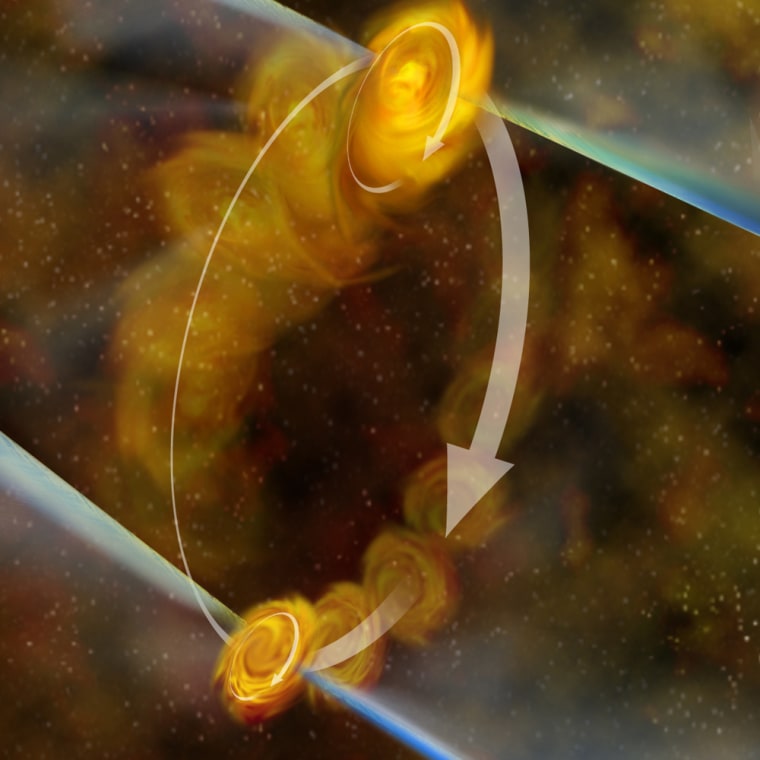An astronomical survey of what was supposed to be a double star system has uncovered another star lurking behind its thick veils of gas and dust. Scientists think the third star might have been gravitationally lassoed in by the other two stars as it was passing by.
Unlike our sun, many stars in the universe have at least one stellar companion. How such multiple star systems form is still an open question, but there are two popular theories.
According to one idea, a large disk of dust, gas and other material swirls around so quickly that it breaks apart to form two or more young stars, called "protostars."
Each protostar is surrounded by its own disk that, in time, can coalesce to form individual solar systems, complete with planets, moons, comets and asteroids. According to this so-called "competitive accretion" hypothesis, stars can form in time spans as brief as 1 million years or less.
An alternative idea is that stars are born alone, by a slow accretion of gas and dust that can take 10 million years or more. According to this scenario, multiple star systems form when a star gravitationally ropes in another star as it passes by.
Scientists led by Jeremy Lim of the Institute of Astronomy & Astrophysics, Academia Sinica, in Taiwan, examined the protostars in L1551 IRS5, a still-forming star system located 450 light-years from Earth. Using the Very Large Array (VLA) radio telescope, the team discovered a third star that was previously hidden. The close snapshots also revealed features that support both formation theories.
"Our new study shows that the disks of the two main protostars are aligned with each other, and also are aligned with the larger, surrounding disk. In addition, their orbital motion resembles the rotation of the larger disk," Lim said. "This is a 'smoking gun' supporting the fragmentation model."
Alyssa Goodman, an astronomer at Harvard-Smithsonian Center for Astrophysics who was not involved in the study, said the findings suggest L1551 IRS5, now a relatively calm region of the sky, must have once been a much more turbulent place for two protostars to form together.
Whether a swirling disk gives birth to one star or many depends on how vigorous the interactions are between its parts. If there is a lot of mixing occurring within the disk, it is more likely to fragment and give birth to multiple stars. Goodman likens the chances of interactions between stellar material to the probability of people living in rural, suburban and urban areas coming across one another.
People living in the city are more likely to run into one another than those in the countryside. The same is true for star-forming disks, Goodman said.
"The reason [L1551 IRS5] is interesting for me is because it says that even this region that looks rural, or possibly even suburban, that something which is thought to happen only in urban regions must have happened," Goodman told SPACE.com.
The third protostar, Lim's team discovered, is aligned along a different plane than its two neighbors, suggesting it might have formed elsewhere. "The misalignment of the third protostar and its disk leaves open the possibility that it could have formed elsewhere and been captured," Lim said.
The misaligned protostar is not conclusive evidence of the capture scenario, however, since gravitational interactions with its two larger neighbors could have skewed the protostar’s alignment. Lim’s team is planning further studies to test the two hypotheses.
The study is detailed in the Dec. 10 issue of Astrophysical Journal.
